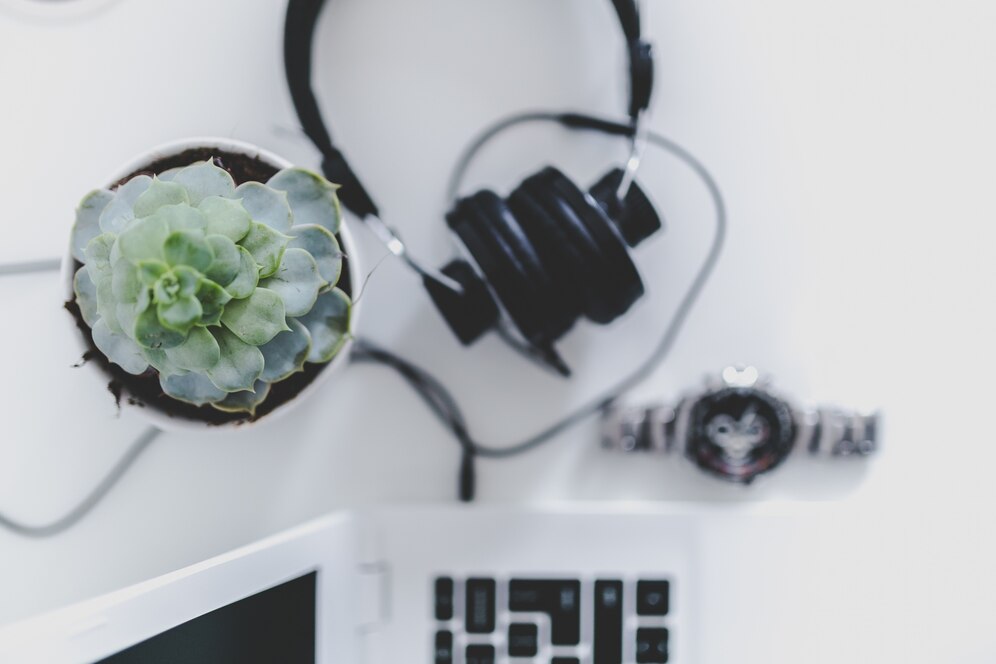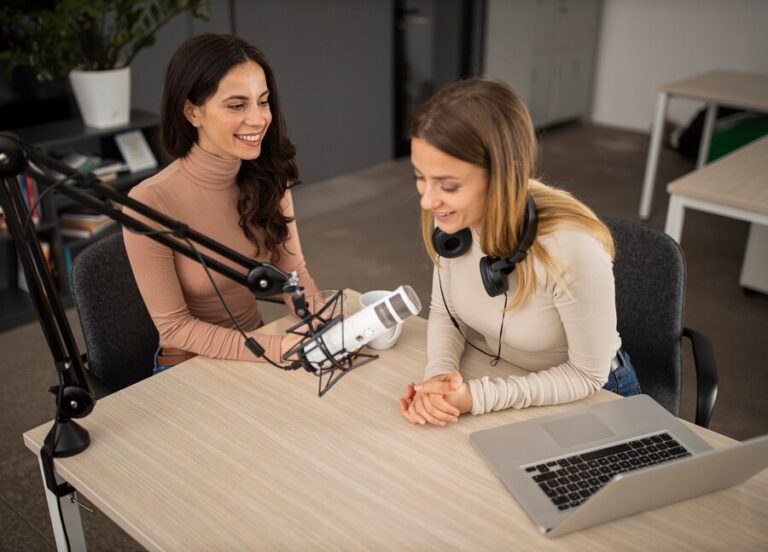Top 10 Must-Have Accessories for Voiceover Work

Voiceover work is an art form that requires more than just a good voice. It’s about precision, clarity, and the ability to bring characters, brands, or ideas to life through sound. However, even the most talented voice actor can’t do it alone. Behind every professional voiceover artist lies a set of essential tools and accessories that help refine their craft and ensure the best possible recording quality.
In this post, we’ll explore the top 10 must-have accessories for voiceover work that every voice actor should consider. From microphones to soundproofing solutions, each item serves a critical role in producing high-quality audio. These tools will not only enhance your performance but also make your workflow smoother and more efficient.
1. Studio-Quality Microphone: The Heart of Your Setup
At the core of any voiceover setup is a high-quality microphone. The microphone is your primary tool, capturing the nuances of your voice with clarity and accuracy. Without a good mic, no amount of editing or soundproofing can compensate for poor-quality sound.
What to Look For
When selecting a microphone for voiceover work, you want one that offers flat frequency response, low self-noise, and clear, natural sound. Condenser microphones are generally preferred because they capture the full spectrum of sound in a detailed way. Some top choices include:
- Shure SM7B: A dynamic cardioid microphone known for its versatility and ability to capture rich, full sound while rejecting background noise.
- Audio-Technica AT2020: A more budget-friendly option that offers excellent clarity for those just starting out.
- Neumann TLM 103: A high-end condenser mic that delivers a pristine, broadcast-quality sound, often used by professionals in the industry.
Tip: If you’re recording in a less-than-ideal environment, consider getting a microphone isolation shield. It helps minimize room noise and provides a cleaner sound. For example, the Auralex Acoustics MudGuard is highly rated.
Expert Insight: According to Sound On Sound, choosing the right mic is crucial because it impacts how your voice is perceived. While microphones can be a significant investment, they are the foundation of your setup and well worth the cost.
2. Audio Interface: The Bridge Between Your Mic and Computer
An audio interface is an essential tool for converting your analog voice into a digital signal that your computer can process. It connects your microphone to your recording software, offering better sound quality, less latency, and more control over your recordings.
What to Look For
You’ll need an interface that’s compatible with your microphone and provides high-quality preamps. Some popular models include:
- Focusrite Scarlett 2i2: A reliable and affordable choice with excellent preamps, perfect for those getting started.
- PreSonus AudioBox USB 96: A compact interface with great sound quality, ideal for home studios.
- Universal Audio Apollo Twin X: A high-end interface with top-tier converters and preamps, used by professionals.
Expert Insight: Industry pros often recommend interfaces that come with software bundles, such as the PreSonus AudioBox or Focusrite Scarlett, which include DAWs (Digital Audio Workstations) like Ableton Live or Pro Tools First, offering a complete setup for beginners.
Tip: Be sure to select an interface that offers phantom power if you’re using a condenser microphone, as this feature is necessary for certain mic models.
3. Headphones: Hear Every Detail
A good pair of headphones is vital for monitoring your recordings. They help you catch imperfections, such as plosives (harsh “P” sounds), mouth clicks, or background noise, ensuring your final product is crisp and professional.
What to Look For
The best headphones for voiceover work should offer accurate sound reproduction and comfortable wear. Over-ear, closed-back headphones are the best choice because they provide excellent isolation and prevent sound leakage during recording. Consider these models:
- Audio-Technica ATH-M50x: Known for their flat frequency response and durability.
- Sony MDR-7506: An industry standard, offering clear sound and excellent isolation.
- Beyerdynamic DT 770 PRO: Great for comfort and sound isolation, ideal for long recording sessions.
Expert Insight: According to VoiceoverXtra, closed-back headphones are particularly useful for voiceover work because they help you monitor your audio without any sound bleed that could interfere with your performance.
4. Pop Filter: Reducing Plosives and Distortion
When you pronounce certain letters like “P” or “B,” you can create a burst of air that can cause distortion and unwanted noise in your recordings. A pop filter (or pop shield) is a simple yet essential accessory that helps reduce these plosives, ensuring your voice sounds clear and smooth.
What to Look For
Look for pop filters that feature a dual-layer mesh design to absorb air and soften the sound of plosives. Popular choices include:
- Aokeo Professional Microphone Pop Filter: Known for its affordability and effective performance.
- Stedman Proscreen 101: A durable, high-quality metal pop filter for more serious setups.
- RODE PSA1: A popular arm-mounted option that’s both functional and stylish.
Tip: Position your pop filter about 2 inches from your microphone and slightly off-center to get the best results.
5. Shock Mount: Minimizing Vibration
A shock mount is designed to reduce vibrations and movement that could affect your microphone. Whether you’re tapping your desk or accidentally brushing against your mic stand, a shock mount keeps these noises from reaching your microphone.
What to Look For
Make sure the shock mount is compatible with your specific microphone. Some excellent options include:
- Rode PSM1 Shock Mount: A high-quality shock mount designed for Rode microphones.
- Audio-Technica AT8458: A solid choice for Audio-Technica microphones.
- Neumann EA 1: A shock mount tailored for Neumann microphones, offering superior vibration isolation.
Expert Insight: According to ProSoundWeb, using a shock mount is essential for preventing low-frequency vibrations that can muddy your sound, especially when recording in a less-than-ideal environment.
6. Soundproofing and Acoustic Treatment: Creating the Perfect Environment
The environment in which you record plays a huge role in the quality of your voiceover work. Poor room acoustics or external noise can compromise your recordings. While it’s not always possible to record in a professional studio, there are ways to improve your recording space at home.
What to Look For
Here are a few ways to soundproof your recording space:
- Acoustic foam panels: These help control echo and reverb in your room, ensuring clean sound.
- Bass traps: These absorb low-frequency sounds, preventing muddiness.
- Soundproof curtains: An affordable option to reduce outside noise and reflections.
Popular products include:
- Auralex Acoustics Studiofoam Panels: Excellent for reducing reflections and controlling room sound.
- Foamily Acoustic Panels: Budget-friendly foam panels that deliver solid performance.
- Acoustimac: Offers both foam panels and bass traps to optimize your recording environment.
Expert Insight: According to Soundproof Cow, effective soundproofing doesn’t always require expensive materials. Simple changes like moving your recording setup away from reflective surfaces or using soft materials like carpets and rugs can make a big difference.
7. Mic Stand or Boom Arm: Stability and Flexibility
A mic stand or boom arm is a must-have accessory for voiceover work. It keeps your microphone steady, reducing handling noise, and offers flexibility in positioning.
What to Look For
A boom arm is a popular choice because it allows you to easily adjust the position of your microphone while keeping it out of the way. Some great options include:
- RODE PSA1 Swivel Mount Studio Microphone Boom Arm: A sturdy, flexible boom arm that’s perfect for voiceover work.
- Samson MB1 Mic Boom Arm: A budget-friendly option with excellent range and durability.
- Blue Compass Premium Tube-Style Broadcast Boom Arm: A high-end option that combines functionality with a sleek design.
Expert Insight: VO Heaven notes that a quality mic stand or boom arm helps you maintain good posture while recording, reducing strain on your neck and back during long sessions.
8. Digital Audio Workstation (DAW): Where the Magic Happens
A DAW (Digital Audio Workstation) is essential software for recording, editing, and producing your voiceover projects. It allows you to control the finer details of your audio, such as removing noise, adjusting levels, and applying effects.
What to Look For
Look for DAWs that are user-friendly and offer powerful editing tools. Some popular options include:
- Adobe Audition: A professional-grade DAW with a wide range of features for voiceover work.
- Audacity: A free, open-source DAW with basic editing features and a solid user base.
- Reaper: A budget-friendly DAW with advanced features and a flexible interface.
Tip: If you’re just starting, Audacity is a great entry-level DAW, but for long-term voiceover work, investing in a more advanced program like Adobe Audition or Pro Tools is recommended.
9. External Hard Drive: Backup and Storage
Voiceover work can involve large audio files, especially when recording for commercials, audiobooks, or animated projects. An external hard drive ensures you have enough storage space and allows you to back up your work for safety.
What to Look For
Choose an external drive with fast data transfer speeds and a large storage capacity. Some recommended options are:
- LaCie Rugged Mini: Known for its durability and high-speed data transfer.
- Western Digital My Passport: A reliable and affordable choice for everyday use.
- Seagate Backup Plus: Offers plenty of storage space at a competitive price.
Expert Insight: Backing up your audio files is crucial, as lost recordings can be devastating. According to TechRadar, an external hard drive is an excellent choice because it provides both speed and security for your recordings.
10. Soundproof Recording Booth: The Ultimate Upgrade
For those who take their voiceover work seriously, a soundproof recording booth offers the ultimate upgrade. These booths are specially designed to provide perfect acoustics, eliminate outside noise, and ensure you have complete control over your sound.
What to Look For
When choosing a soundproof booth, consider factors like size, ease of setup, and price. Some options include:
- StudioBricks: Offers customizable, high-quality soundproof booths designed for professional voiceover artists.
- VocalBooth: A portable solution that’s easy to set up and ideal for home studios.
- ISOVOX 2: A compact, portable sound booth designed specifically for voiceover recording.
Expert Insight: The Voiceover Guide recommends investing in a soundproof booth if you plan to record frequently. It’s an excellent way to create a professional environment without the need for extensive room modifications. Note: Here is a little help for the budget-minded.
Conclusion: Building Your Voiceover Toolkit
Whether you’re just starting or have years of experience, investing in the right accessories for your voiceover setup is essential for producing professional-quality recordings. Each of the tools and accessories we’ve covered— from your microphone to your soundproof booth—plays a critical role in your workflow and recording quality.
By selecting the right equipment and taking the time to optimize your environment, you’ll ensure that your voiceover work sounds its best, whether you’re recording an audiobook, commercial, animation, or podcast.
Next Steps: Take stock of your current setup and start by upgrading the tools that will make the most impact. Whether it’s a new microphone, a pop filter, or acoustic treatment, each improvement brings you closer to producing audio that stands out. Happy recording!






